Karamjeet Singh, a 31-year-old wildlife photographer and naturalist from Ladakh, vividly remembers the time he took his first photograph in the wild back in April 2019. (Image above of Karamjeet; Snow Leopard)
“The first photo that I took in the wild after I got my first camera was of a Himalayan Brown Bear in a village called Huliya near Drass. The photo was of a mother and her cub playing in the snow. Witnessing these majestic creatures in their natural habitat was a very captivating experience, and I was thrilled to seize the opportunity to document that moment,” recalls Karamjeet, speaking to The Better India.
Visit Karamjeet’s Instagram page today, and you’ll find spell-binding photographs of the wildlife in Ladakh. In his photos, he has managed to capture a variety of endangered species ranging from the elusive snow leopard (Panthera uncia) to the solitary Himalayan Brown Bear (Ursus arctos isabellinus), Pallas’s Cat (Otocolobus manul), Tibetan Wolf (Canis lupus chanco), the Urial (Ovis orientalis), the Eurasian eagle owl (Bubo bubo) and bearded vulture (Gypaetus barbatus), among others.
Going beyond wildlife, Karamjeet has also captured spectacular photos of the region’s landscape, its tribes and night skies. As Karamjeet notes, “Ladakh contains an amazing range of wildlife, including birds and mammals. It’s a shame not many people notice these incredible creatures. I’m just awestruck by the beauty around us, and I try to capture it with my camera.”
Armed with his Nikon D750 with a 200-500 mm lens which his father got him “after a lot of persisting”, here’s Karamjeet’s story.
Ladakh is home
Karamjeet’s family has established roots in Kargil for over five generations. Their home today lies in Balti Bazaar, which is situated in the heart of Kargil town.
“The initial move to Ladakh was made by my great-great-grandfather, who migrated from Mirpur (now in Pakistan) for trade. He settled in Kargil after marrying a woman hailing from a Buddhist family in Shargole, Kargil. In our small and tight-knit Sikh community in Kargil, familial ties are strong. There are barely 50 of us but we are engaged in various occupations,” he explains.
As Malvika Sharma notes in ‘Partition, identity and belonging among Sikhs in the borderland district of Kargil, Ladakh’, for Asian Ethnicity, “Sikhs in Ladakh arrived as traders in Jammu and Kashmir, and settled around the major trading centres along the silk-route such as Skardu, Kargil, Leh in the then undivided erstwhile princely state as it existed before 1947-partition.”
Unlike other members of his family who established their business ventures, his father pursued a career as a government school teacher. While one of his uncles is also a school teacher, the others are proprietors of tea-selling businesses.
Karamjeet, meanwhile, developed his love for photography at a local photo studio in Kargil while he was still studying at the Suru Valley Public School.
“I developed a keen interest in photography while spending time at a local shop called Canon Photographer, where I often observed Anoop Singh, the owner, and his son, Sanjeet Singh, passionately capturing and editing photos. This experience ignited my fascination for photography, leading me to pursue a Bachelor’s degree in journalism and mass communication in New Delhi,” he says.
“After graduating from journalism school, I had the opportunity to work with Kargil Today, a local media channel, where I worked as a photographer and media professional for over three years,” he adds.
Learning how to capture nature’s finest
“I initially relied on cameras borrowed from acquaintances, utilising them as my tools to delve into photography. YouTube tutorials played a crucial role in guiding me through the learning process. In 2016, I joined Roots Ladakh, a travel company run by local entrepreneurs, Muzzamil and Taffazul Hussain, assuming the role of their social media content creator,” says Karamjeet.
“It was during this period that I seized the opportunity to delve into wildlife photography. My responsibilities expanded as I began guiding groups for Roots Ladakh and serving as a naturalist when they inaugurated their wildlife lodge called Drenmo in Drass,” he adds.
During this stint with Roots Ladakh, his fascination with the Himalayan Brown Bears deepened. The travel company has been engaged in various Himalayan Brown Bear-centred conservation projects, particularly through their Drenmo Lodge, and the emphasis of these projects is to reduce the conflict between local people and the creatures and promote eco-tourism.
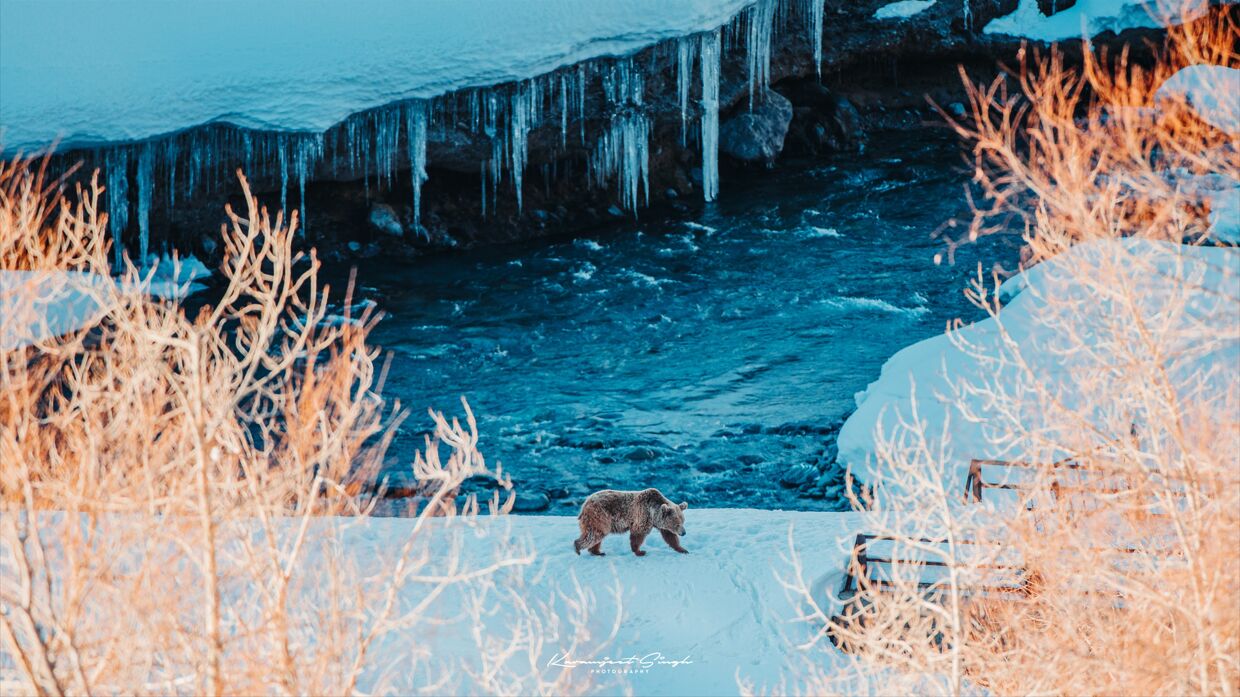
“This connection provided me with the chance to collaborate with the local community, where we collectively engaged in initiatives to raise awareness about the significance of wildlife, particularly the Himalayan Brown Bear, in the region,” he explains.
A fascinating and solitary creature, the brown bear has an excellent sense of smell and can run at a speed of 64 kmph. As Niazul Hassan Khan, a local researcher studying the Himalayan Brown Bear notes in his explainer for Nature inFocus, “A subspecies of the Brown Bear (Ursus arctos), the Himalayan Brown Bear is largely confined to rolling uplands, alpine, subalpine, glacial moraines and barren regions of the Greater Himalayas and some parts of Trans-Himalayas…[In India] They are predominantly found in the Kargil region of Ladakh, where their distribution is fragmentary, spread across Drass, Suru valley, Shargole, and Zanskar.”

Besides the people at Roots Ladakh, Karamjeet feels that he owes his development as a wildlife photographer to Zaheer Bagh, a local hotelier and wildlife enthusiast in Kargil.
“His unwavering support and shared passion for exploration have made him a constant companion, and together we’ve explored various parts of Kargil and photographed different species of mammals and birds. I don’t own a car or a two-wheeler, so he would often take me to places that were too far out to be reached by foot,” he explains.
“While I did grasp the basics of photography during my bachelor’s studies, the real learning happened in the natural landscape. I immersed myself in continuous experimentation with any camera that came my way. My learning process involved making many mistakes and gaining a variety of insights from the people in my surroundings,” he adds.

Capturing these incredible images
What’s the secret behind how he takes these photos?
“There is no big secret. I just grab my camera and shoot whatever catches my eye. For wildlife shots more specifically, it’s a bit different. I head to places known for wildlife, wait for hours scanning the area, and sometimes, there’s nothing to show. Wildlife is unpredictable, you know?” he says.
He adds, “But there are those times when a wild animal pops up out of nowhere and puts on a show. So, I try to always keep my eyes open ensuring that I don’t miss an opportunity to capture something in the wild.”
One such opportunity arrived in the winter of 2020-2021 when he captured a captivating photograph of a Himalayan Brown Bear surrounded by feral dogs. For this, he won the second runner-up prize (Conservation Issues) in the Nature inFocus Photography Contest 2021.

As the citation notes, “A growing concern with wildlife conservation in Ladakh is the increasing number of feral and free-ranging dogs. Their ability to multiply fast is considered a threat to the other animals thriving in the same habitat. However, the image shows how the locals have turned this problem into an innovative solution for their woes.”
“The dogs seen here were feral, but the locals domesticated them to later employ them to deter Himalayan Brown Bears from entering their villages. The system seems to work efficiently for the villagers, as the dogs keep the wild animals at bay and alert the people about them,” it adds.
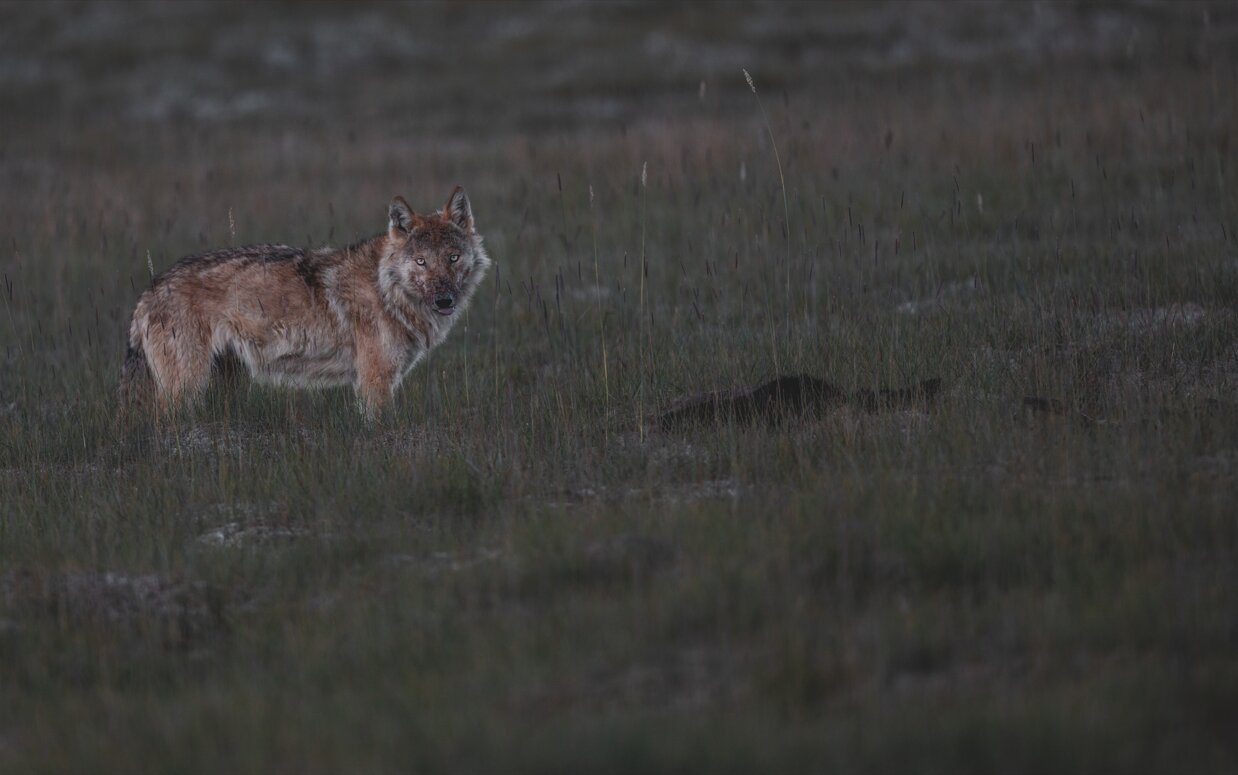
Also helping him along the way to take these captivating photos are friends and acquaintances who are naturalists, guides, photographers, spotters, and have contacts in villages.
“They’re always kind enough to share information about wildlife sightings whenever something interesting is going on. This community is fantastic with networking, so every time there’s any special wildlife activity, we make sure to inform each other,” he adds.
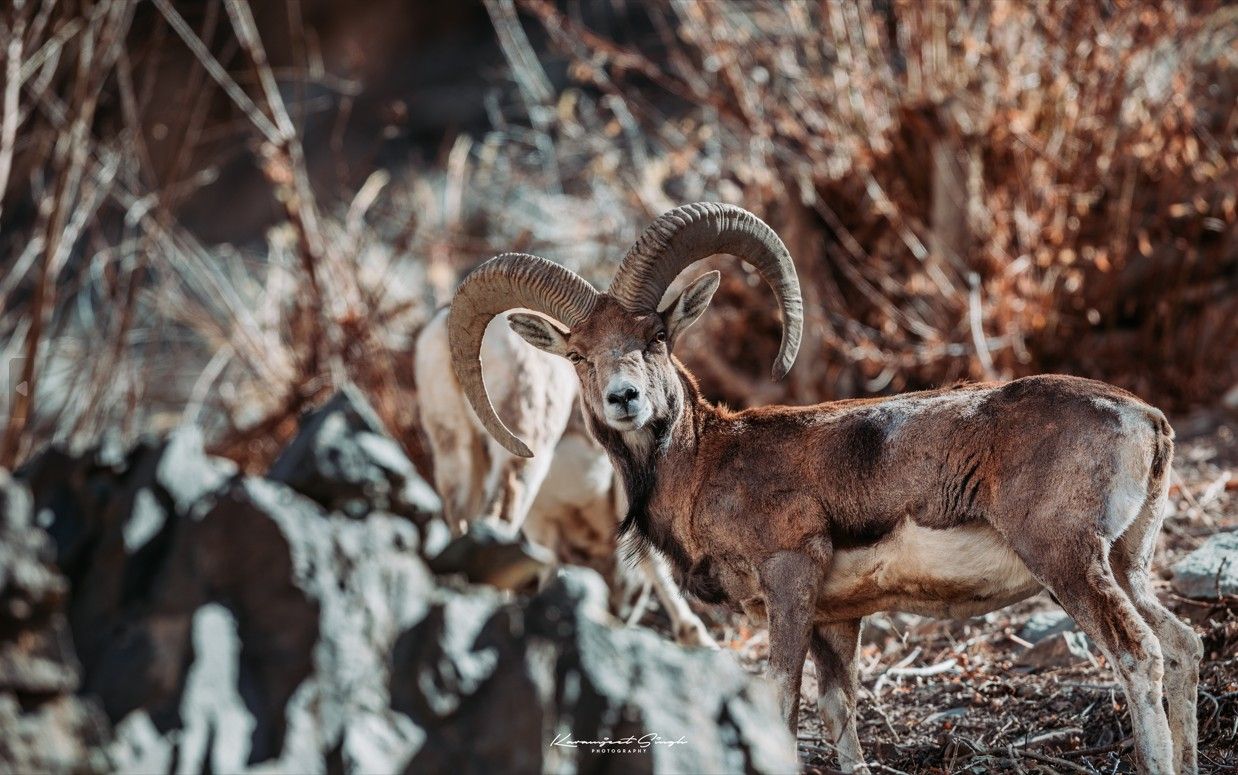
Currently, Karamjeet uses a Canon R5 camera paired with a prime Canon lens for wildlife photography. However, the process extends far beyond just capturing shots; it involves countless hours and a meticulous editing process for both videos and photos. He also relies on Adobe Lightroom and Photoshop to edit his pictures and uses DaVinci Resolve to edit videos.
“My proficiency with these software tools has been developed through hands-on experimentation and from friends who use them and dedicated learning from tutorials. Despite the time invested, I consider myself a learner in the realm of editing,” he says.
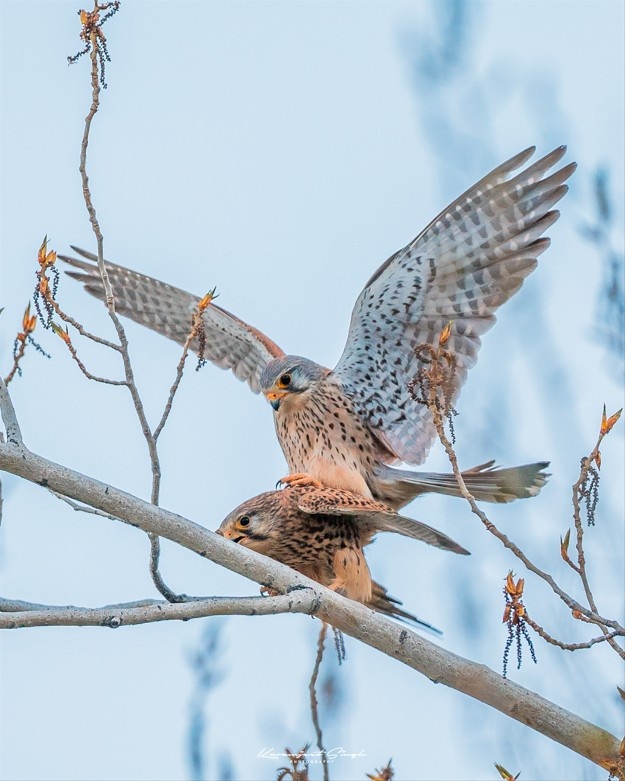
Current Work
As stated earlier, his journey led him to work as a naturalist, guiding wildlife groups for Drenmo Lodge in Drass. “The lodge primarily focuses on Himalayan Brown Bears. The season for these bears runs from April to October with a hibernation period afterwards, making the job seasonal. Fortunately, the Snow Leopard spotting season takes over from December to April,” he says.
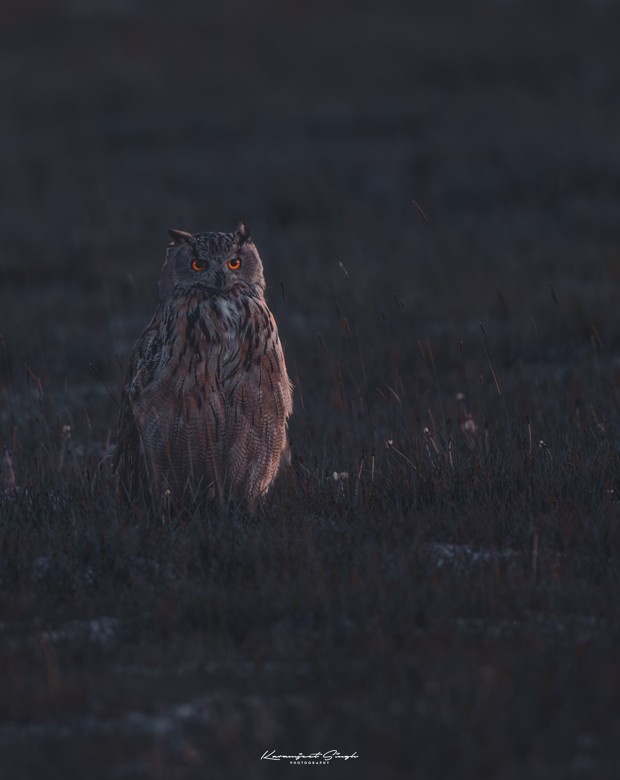
“Last year, I had the privilege of learning from individuals based in Leh who have been actively involved in snow leopard tourism for over a decade. Notable figures include Gulzar Hussain from Snow Leopard Pros, George Otpal of the House of Rumbak, Rashid from the Lungmar Camp, and Morup Namgyal from Shan at Uley. They generously provide freelance opportunities. Not only do I get the chance to photograph the elusive snow leopard and other mammals but I also have the opportunity to guide groups. Through these experiences, I gained valuable insights into the world of snow leopards. Together with my friends, including Morup, Arhaan, Noor Jahan, and Kesang, I regularly embark on wildlife explorations,” he adds.
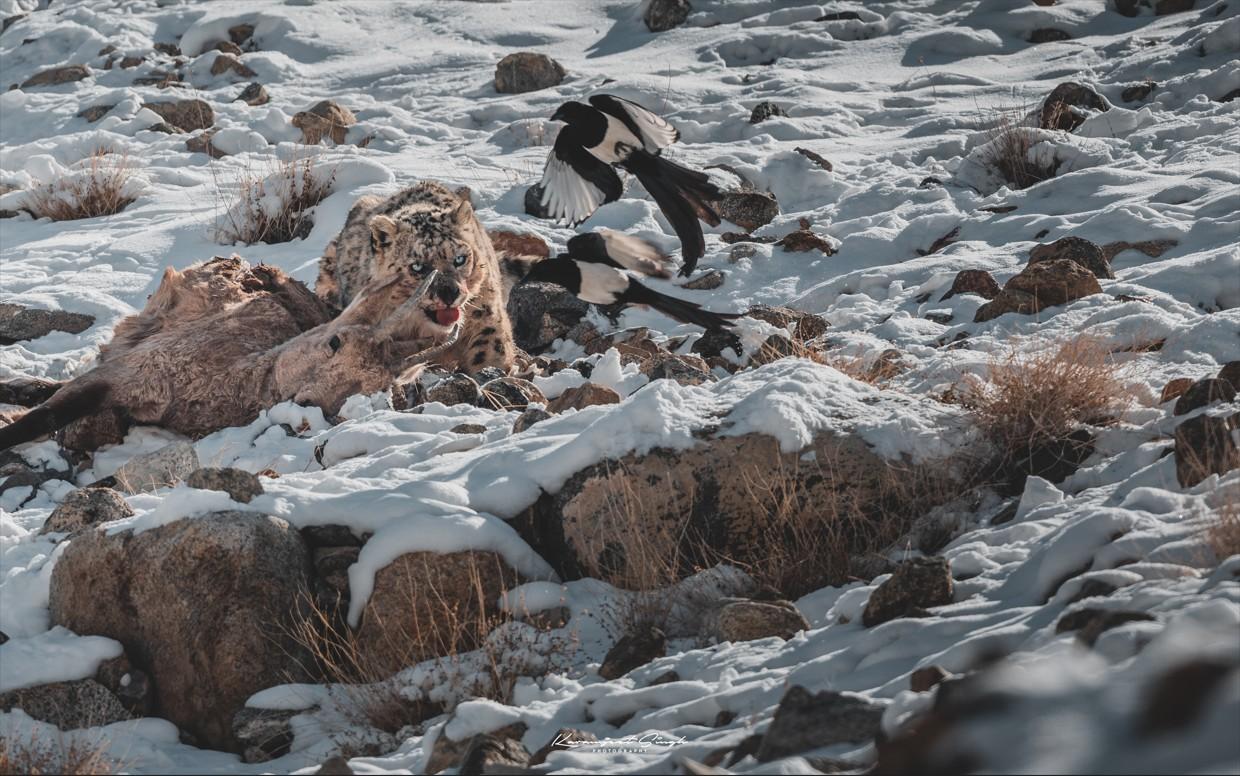
Recently moving base to Leh, he is working as a naturalist and photographer for the many freelance projects he undertakes. This has become his source of livelihood at the moment.
“Additionally, I’ve now started leading independent photography tours during summers with enthusiastic photographers from various parts of India, as we explore different locations in Ladakh and capture magical moments through our lenses,” he says.
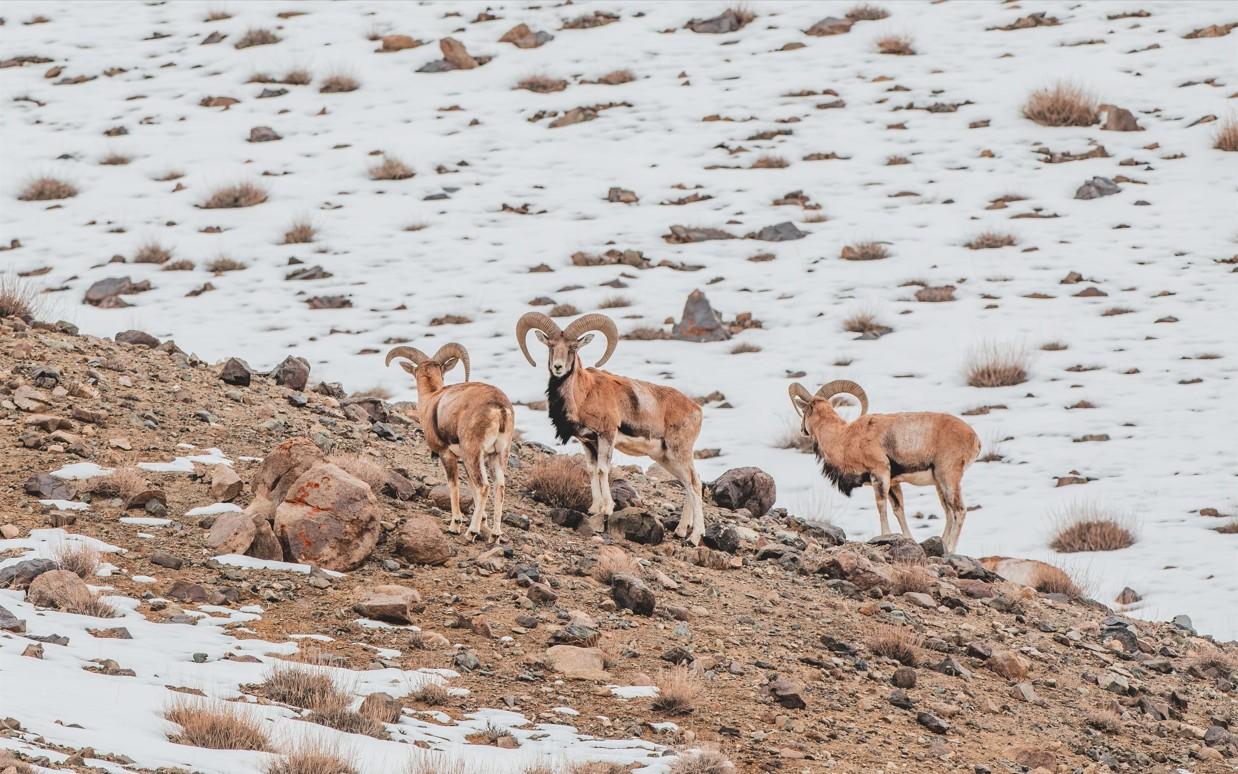
Venturing into the wild, Karamjeet is also acutely aware of the real threats to the region’s remarkable fauna and what we can do to address them.
“The biggest threat to Ladakh’s incredible wildlife is the lack of awareness about the importance of wildlife in our ecosystem. Human encroachment into their territories poses a significant challenge. Additionally, the overpopulation of stray dogs in Ladakh is a pressing issue. Raising awareness and promoting responsible coexistence can play a crucial role in addressing these concerns,” he explains.
(Edited by Padmashree Pande; Images & reels courtesy Karamjeet Singh/Instagram)
No comments:
Post a Comment